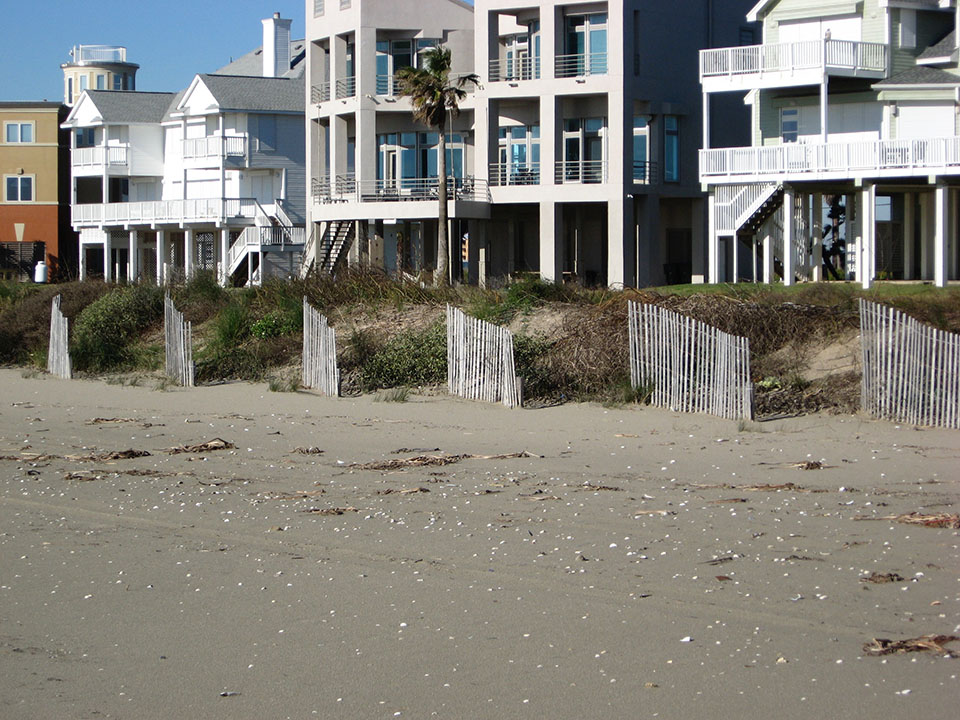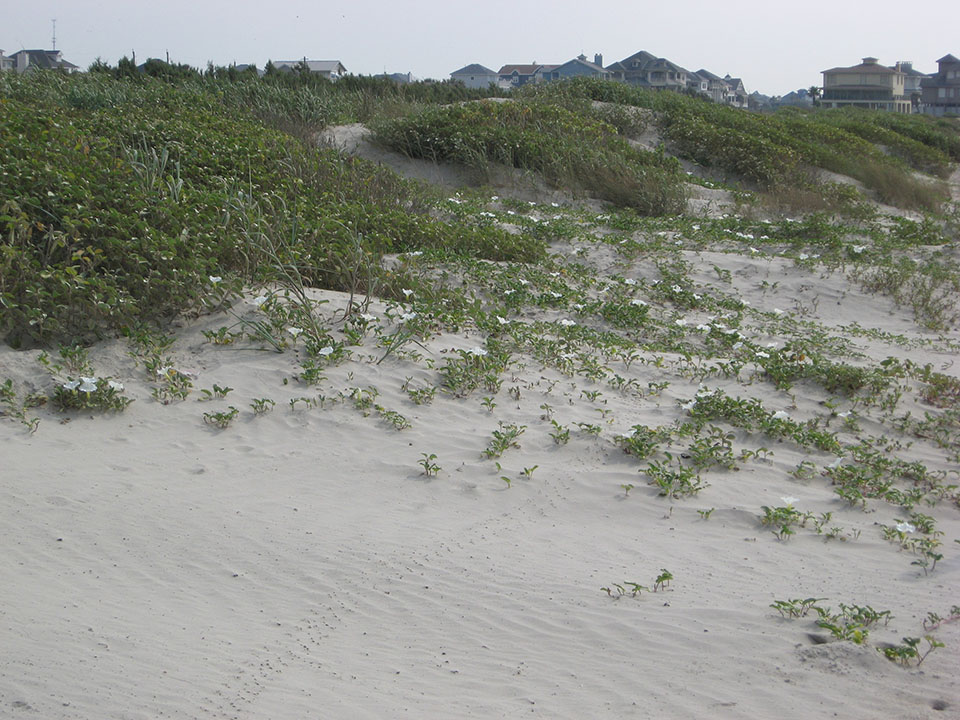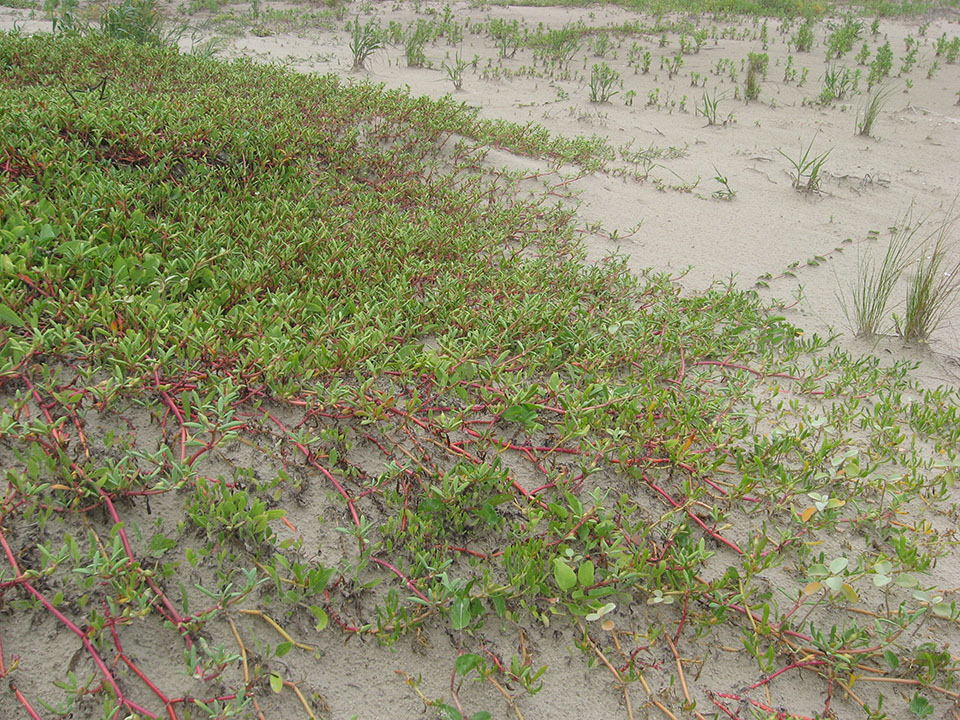by Steve Alexander
With hardly a glance, beach visitors pass piles of sand on their way to the waves, their eyes straight ahead, searching for a good spot to settle. But it’s not the water’s edge they seek that’s the most important part of the shore. That distinction belongs to the beachfront dunes on the upper beach, the part that protects all behind it.
Those piles of protection take time to form. Waves deliver sand to the shore grain by grain. Those grains are picked up by onshore winds and blown up the beach in ground-hugging fashion, in movements similar to ghostly apparitions. Sand grains move along until they settle against an obstacle, any obstacle — a shell, a piece of driftwood, a dead fish or seaweed.
That’s the strategy behind the human practice of placing bales of hay, Christmas trees and sand fencing on the beach. Like the obstacles delivered naturally to the shore, each of these represent an obstacle to movement, where sand settles and stays put.
In time, a sand pile forms against an obstruction and continues to grow slowly. After months, piles grow large and high enough to serve as fertile ground for wind-blown seeds. Seeds settle, germinate and grow, sending roots downward and long runners outward, slowly growing their footprint in the sand. Their anchoring roots and widening presence encourages more grains of sand to stop, thus growing the pile, both higher and wider.
These piles become what Richard Davis called coppice mounds in his book Beaches of the Gulf Coast. They ultimately join together to form dunes, those proper-looking ridges that extend along the upper shore.
Dunes are important, especially during hurricane season, because they function as an effective barrier against high water and storm surge. Galveston’s seawall serves that purpose as well, but it’s the beachfront dunes that serve as Galveston’s first line of defense against the sea.
So, on your next beach outing, take a look around as you head for the waves. And maybe this time, you’ll linger a bit longer.
[ABTM id=6804]



